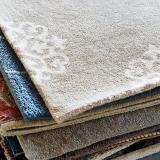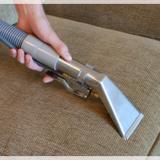Our Blog
Please feel free to post a question or just join the conversation.

Dust Mites: How They Affect Your Home and Health | Alec’s Carpet & Upholstery Cleaning
Dust mites are microscopic creatures that thrive in our homes, feeding primarily on dead skin cells shed by humans and pets. Though invisible to the naked eye, measuring only 250–300 microns, these tiny pests can have a big impact on indoor air quality and allergies.
Why Dust Mites Are a Health Concern
Dust mites are a common trigger for asthma and allergies, especially in children, the elderly, and those with respiratory sensitivities. The allergens come from dust mite feces and body fragments. Each dust mite produces about 20 droppings per day, containing proteins that many people are allergic to.
During the fall and winter months, the problem worsens:
Homes are sealed up, allowing allergen concentration to rise.
Dry indoor air causes skin to shed more, providing dust mites with more food.
High concentrations of dust mites can be found in beds, couches, frequently used chairs, and carpeted areas. A typical used mattress can house 100,000 to 10 million dust mites, while carpets can hold up to 100,000 mites per square yard.
Even simple activities—walking on a rug, sitting on a chair, or shaking bed coverings—can release dust mite allergens into the air, aggravating allergy symptoms.
Symptoms Caused by Dust Mites
The proteins in dust mite feces trigger an immune response in allergic individuals:
Histamine release causes itchy eyes, sneezing, runny nose, and wheezing.
Inflammation can lead to nasal congestion, swelling, and irritation of the upper respiratory tract.
How to Reduce Dust Mites in Your Home
While it’s impossible to completely eliminate dust mites, targeted strategies can significantly reduce their impact:
Bedding and Mattresses
Use a dust mite-proof cover on mattresses and pillows.
Vacuum mattresses, pillow surfaces, and bed bases weekly.
Wash all bedding weekly in hot water at 130°F or higher to kill dust mites.
Carpets and Upholstery
Vacuum weekly using a vacuum with a HEPA filter, making multiple passes to remove allergens effectively.
Professional cleaning of carpets and upholstered furniture helps remove soil, extend the life of your furnishings, and reduce allergens.
HVAC and Air Filters
Replace or clean furnace and air conditioner filters monthly.
Use filters rated for airborne allergens for maximum effectiveness.
How Often Should You Clean?
Each home is unique, depending on:
Number of occupants and pets
Frequency of use in bedrooms, living rooms, and high-traffic areas
Presence of allergy or asthma sufferers
Industry recommendations:
Annual professional cleaning of all carpets and furniture.
Semi-annual cleaning for heavily used areas or bedrooms of allergy-prone individuals.
Alec’s Commitment to a Healthier Home
For over 55 years, Alec’s Carpet & Upholstery Cleaning has emphasized both cleanliness and health. Our philosophy is simple:
“Dirt breeds germs, call for the health of it.”
Professional cleaning reduces allergens, restores the life of your carpets and upholstery, and creates a healthier indoor environment for your family.
📞 Call us today at 781-871-1415 or visit Alecscarpetandupholsterycleaning.com to schedule a professional cleaning and reduce dust mites in your home.
note_stackRelated Posts
- Carpet Cleaning in Boston, MA - Carpet Cleaning Sep 6
- Best Carpet Cleaning in Hingham, MA – Trusted Local Experts - Carpet Cleaning Sep 6
- Why Carpet Cleaning in Boston Is Different | Alec’s Carpet & Upholstery Cleaning - Carpet Cleaning Jan 31
- How Often Should You Clean Your Carpets? Expert Advice for Boston Homes - Carpet Cleaning Feb 19
- Should You Clean Area Rugs at Home or Send Them Out? | Expert Guide by Alec’s Carpet Cleaning - Carpet Cleaning Jan 29
- Professional Carpet Cleaning for Salt Stains on Rugs - Carpet Cleaning Nov 17
- Professional Carpet Cleaning: The Best Way to Clean Your Carpets - Carpet Cleaning Nov 12
- Carpet Odor Removal: Eliminate Pet, Bacteria & Musty Smells - Carpet Cleaning Oct 7
- Boston Carpet Cleaning & Upholstery Services | Expert Professional Care - Carpet Cleaning May 2
- Nylon vs Wool Carpets: How to Choose the Right Carpet for Your Home - Carpet Cleaning Jan 25
- Winter Carpet Cleaning Tips: Protect Your Floors & Rugs | Alec’s Carpet Cleaning - Carpet Cleaning Jan 22
- Best Boston Carpet Cleaner | Alec’s Carpet & Upholstery Cleaning - Carpet Cleaning Dec 21
- Oriental Rug Cleaning in Boston, MA – What’s the Best Way? - Carpet Cleaning Dec 14
- How to Prevent Black Lines Along the Edges of Your Carpet - Carpet Cleaning Mar 10
Blog Categories
-
Carpet & Upholstery Cleaning (15)
-
 Carpet Cleaning (15)
Carpet Cleaning (15)
-
 Spot Cleaning (14)
Spot Cleaning (14)
-
Uncategorized (5)
-
 About Rugs (5)
About Rugs (5)
-
 Upholstery Cleaning (5)
Upholstery Cleaning (5)
-
 About Carpets (3)
About Carpets (3)
-
Outdoor Cushion Cleaning (2)
-
 Fabric Protection (2)
Fabric Protection (2)
-
 Leather Upholstery (2)
Leather Upholstery (2)
-
 Fabrics (1)
Fabrics (1)
-
 Stains on Carpets (1)
Stains on Carpets (1)
-
 Discussions on Carpet & Upholstery (1)
Discussions on Carpet & Upholstery (1)
-
 News (1)
News (1)
